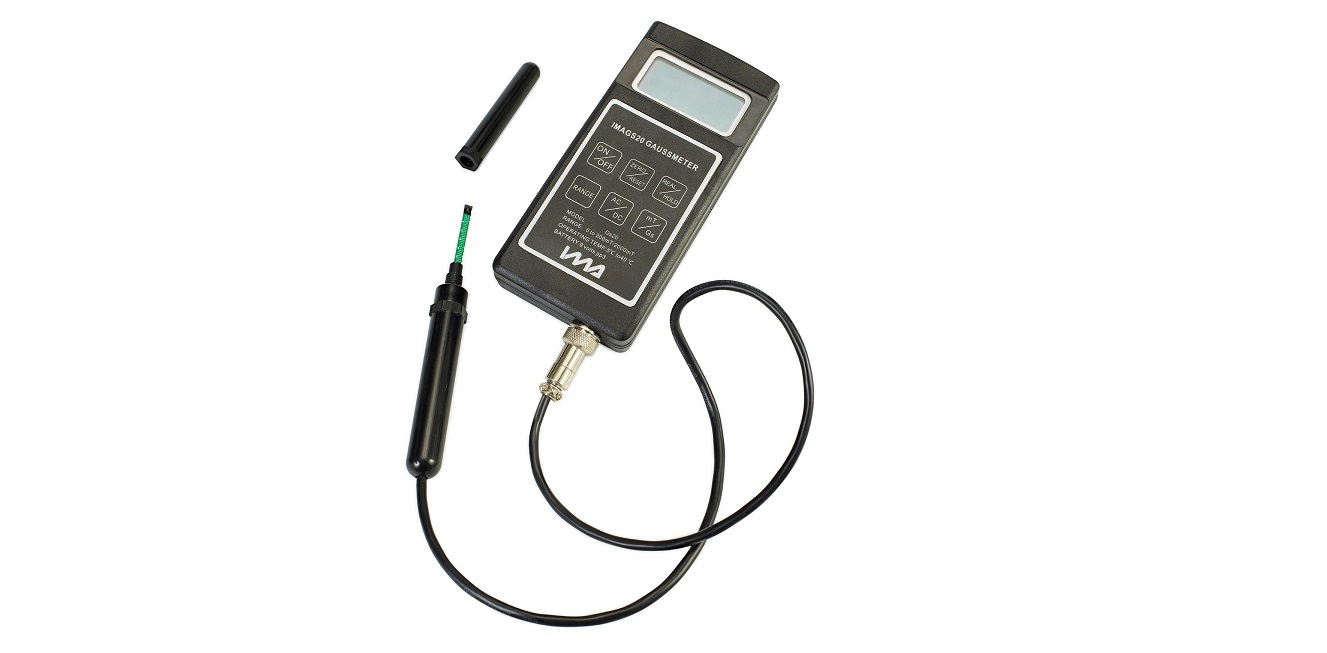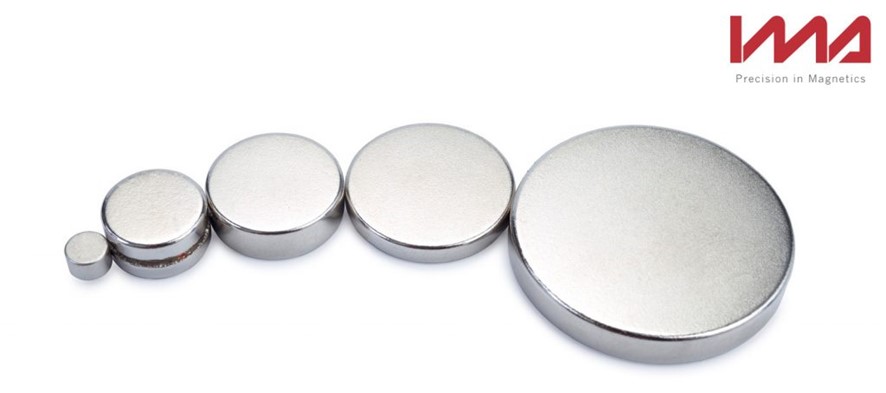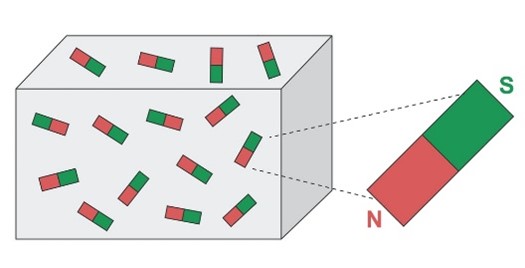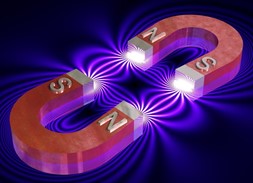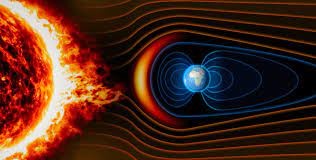Do we know the differences between neodymium, ferrite, and alnico magnets?
Neodymium, ferrite, and alnico magnets are part of the permanent magnet group. Permanent magnets are known for their permanent and long-lasting ability to maintain their magnetism. Despite being within the same type of magnets, they have different characteristics that allow us to differentiate them in order to choose the one that best suits our needs.
Neodymium magnets
Neodymium magnets are the most powerful magnets we can find due to their great attraction force despite their tiny size. Neodymium magnets are the most powerful magnets we can find due to their great attraction force despite their tiny size. Neodymium magnets are mostly used with a coating due to their low corrosion resistance.
Ferrite magnets
Ferrite magnets are the lowest cost permanent magnets, so they are usually the second most used, after neodymium magnets. Depending on the purpose for which they are to be used, we can find them with an isotropic or anisotropic magnetization. Ferrite magnets are usually used in the automotive sector.
Alnico magnets
Alnico magnets are permanent magnets with the highest resistance to high temperatures, acids, and solvents.This type of magnet stands out for its high magnetic induction and is therefore often used in the magnetic field measuring instruments Alnico magnets are usually used for applications in furnaces for clamping or detection.
Differences of neodymium, ferrite, and AlNiCo magnets
Depending on the purpose for which we are going to use the magnet, we will choose one type of permanent magnet or another. Depending on the purpose for which we are going to use the magnet, we will choose one type of permanent magnet or another. In case we have reduced space and we need a great magnetization force, we will use neodymium magnets.
On the other hand, if what we are looking for is a magnet with a high corrosion resistance to be placed outdoors or in places with a high presence of humidity, we will use ferrite magnets, in the same way as if we have a limited budget.
Finally, if what we need is an application that is in a space with a high temperature without the magnet losing its magnetizing strength, we will use alnico magnets. In addition, alnico magnets also have good corrosion resistance and long-term magnetic stability.
Why does the automotive industry require magnetic measurements?
The automotive industry includes all activities related to the development, design, manufacture, marketing... of automobiles. From a worldwide point of view, we are the eighth largest automobile manufacturer in the world.
Since 1885, when Karl Benz created the first automobile that required gasoline for its operation. Since then, the automotive industry has not stopped evolving and updating itself with new technologies, until it created the automobiles we know today.
From 1882, we find electric cars, which incorporate magnetic elements. The advent of electric motors has become an alternative to internal combustion engines. The most common magnets we can find are permanent magnets.
Ferrite magnets have been gradually replaced by neodymium magnets, because of their greater strength regardless of their small size. The most common applications of neodymium magnets are braking systems, sensors, insulators... A large part of the production chain requires magnetic measurements, so the automotive industry requires magnetic measurements to guarantee the warranty of our product and ensure the quality of the car.
What are magnetic measurements and how are they calculated?
Magnetic measurements refer to the evaluation of magnetic fields, along with the magnetization of materials.
The gaussmeter helps magnetic field meters to do their function. The gaussmeter is an instrument for measuring magnetic fields by knowing the flux density.
The degree of magnetization of a material is known through the permeameter. The permeameter is an instrument that measures the permeability of materials.
These instruments, both the gaussmeter and the permeameter, are intended for the evaluation of possible risks that may arise.
Why are magnetic measurements so important?
In the automotive industry, magnetic measurements play a fundamental role, due to the monitoring of the operation of the machinery and the automobile. Thanks to the aforementioned instruments, it is possible to ensure the product and production process guarantee.
Know the quality of the magnet manufacturing process is known by the value of Cpk. The higher the value of Cpk, the lower the risk of product failure in the quality product. To know this value, in other words, the magnetic measurement, the GOM-30 scanner is used.
How can a magnet produce sound and good acoustics?
A magnet can produce good acoustics, since sound is produced by sound waves. These sound waves are picked up by the ear and then transformed into nerve impulses. Magnetism and sound are related, the electrons rotate around the atom, this movement emits a magnetic field related to an external field, this effect is known as diamagnetism. When the atom vibrates, it causes thermal vibrations of the crystal lattice, causing the propagation of sound. When this sound passes through the magnetic field through the current, it produces various frequencies of vibration producing different sounds. This current reaches the electromagnet which produces the activation of the sound.
The volume and pitch of sounds depend on the shape and type of current transmitted in the form of a wave, which has all the information about the encoded sound of the audio. This wave we are talking about depends on 3 factors:
The electric current
The induced magnetic field
The vibration of the coil
A sound is produced when particles move through a medium, changing their state from rest to active. If we focus on the acoustics at a given location, the transmission of sound.
Most loudspeakers and headphones consist of a magnetic field. Through this field the music is reproduced. This is due to opposing magnetic fields (one fixed and one variable).
Another application in which we can find magnets improving acoustics is in microphones, this has a coil that with the help of a magnetic field produces a movement producing a signal from the electromagnetic that subsequently creates the sound.
How do the different types of magnets affect the speakers?
Depending on the type of magnet we use, we will have a different sound effect. The most commonly used magnets are neodymium, ferrite and alnico.
The best magnets for walls with magnetic paint
Magnetic paint is a type of magnetic wall which employs the paint containing iron particles, these particles offer us magnetic properties. This is a great option to avoid making holes in the walls.
Magnetic paints provide us with several properties such as:
Types of magnets for magnetic walls
To place any object on a magnetic wall, we must take into account that depending on the functionality we want to give it, we will use one type of magnet or another. However, ferrite magnets cannot be used because of their low attractive force. Mostly we use a neodymium magnet.
The best magnets for walls with magnetic paint are neodymium magnets. In addition to these, ferrite magnets can be used, but they are not suitable for application on a wall with a magnetic paint coating, e.g. container magnets and office magnets. These two types of magnets have a steel coating that does not have the ability to adhere completely. Despite using magnetic paint, it is advisable to double coat.
When hanging items on the walls with magnetic paint, we must take into account the weight and volume of the object and then make a good choice of the magnet to be used.
How to have magnetic paint?
Magnetic paint is not the same as normal paint because if it is misapplied or spilled, it is difficult to remove and can leave that area with magnetic properties. So before starting to paint the chosen area we must protect the areas that we do not want to be affected. Once we have done the first coat we have to let it dry completely.
What does magnetization mean?
The word magnetization comes from the verb magnetize which means to give magnetic properties to a body and from the suffix -tion which means: the fact or action. Therefore, magnetization is the action given to an element to acquire magnetic qualities. These elements with these properties are known as magnets, which are influenced by a magnetic field. Consequently, the magnetic field represents the strength of the magnet. Magnets are divided into two groups: natural magnets, such as magnetite, or artificial magnets, such as permanent magnets, which are made from alloys of different materials.
What is magnetization?
Magnetization is the degree to which a body is magnetized once it is magnetized. Magnetization is the process by which an element acquires magnetic properties, through the application of a magnetic field. A magnetic field is an electrically charged area that possesses a force produced as a result of the traffic of electric charges. Once an element is magnetized, it acquires the force of attraction and repulsion on other objects with the same properties.
When and by whom magnetization was discovered
Since ancient Greece magnetism had already been discovered, but it was not until the 12th century by the Frenchman Peter Peregrinus de Maricourt. In 1820 Hans Christian Orsted was the person who discovered that electricity and magnetism are dependent factors, in other words, that they are linked.
Magnetic properties
Depending on the absolute permeability, we find ferromagnetic, paramagnetic, and diamagnetic materials.
Types of magnetism
There are two types of magnetism:
Terrestrial magnetism: in this type of magnetism we find that the north pole of a magnetized needle (a compass) and the magnetic north pole coincide. In the same way, its magnetic north pole coincides with the geographic south pole.
Animal magnetism: this type of magnetism is known as mesmerism and it affects everyone's health, in other, the presence of magnets can manipulate our health.





